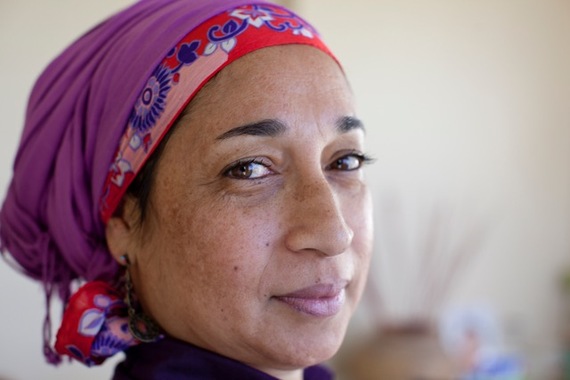This piece was co-written with Dr Oleg Chestnov, Assistant Director-General for Noncommunicable Diseases and Mental Health, WHO.
Most of us have been touched in some way by breast cancer, the number one cause of cancer deaths in women worldwide. Breast Cancer Awareness Month is a time to reflect on the special women in our lives who died too soon, many leaving behind devastated families.
As October draws to a close, we applaud this advocacy initiative, and take stock of its achievements and the challenges ahead. Founded in 1985 in the United States, Breast Cancer Awareness Month quickly spread around the globe, raising awareness about the impact of breast cancer on women, but also on their families, communities, and societies. This initiative has been a catalyst for many countries to increase resources for research and treatment, giving many women and their families renewed hope and a new lease on life.
Inequity
If you live in a resource-rich country, there's good news: the survival rate for early ("stage I") breast cancer has risen dramatically in the past decades, and is now 80-90% in many high-income countries.
However, breast cancer statistics remain grim worldwide: in 2012, 1.7 million women were diagnosed with breast cancer, and half a million women died from the disease. But breast cancer is not only a disease of the rich. In fact, more than half (58%) of women who die from breast cancer live in poor countries, where the chances of survival can be as low as 20%. With weak health systems and limited access to early diagnosis and treatment, women in these countries are likely to be diagnosed only at a late stage of breast cancer -- and in many settings, even access to supportive and palliative care is lacking. When it comes to breast cancer, where a woman lives can be a matter of life or death. This is simply unacceptable.
In the poorest countries women often bear a triple burden of ill-health: first, complications of pregnancy and childbirth continue to take some 300,000 women's lives each year; second, communicable diseases, like malaria, HIV and TB as well as other neglected tropical diseases take an enormous toll on women's health; and third, the emerging threat of non-communicable diseases, including breast cancer, is rapidly increasing.
Such ill-health can impose high costs on families in low- and middle-income countries. When a woman dies from breast cancer, she is often at the prime of her life, is the primary caregiver in a family, and is also working in her community. Paying for health care can push households into a vicious cycle of poverty, loss of income and debt and even greater ill-health. Inequalities in access exist not only between countries, but within them too: even in middle-income countries, poorer women, particularly those living in rural areas, are less able to access services and are therefore at greater risk.
What can be done and what is being done?
Early diagnosis and access to good quality, affordable and timely care are the cornerstones of breast cancer control. Some risk factors can be modified through information and advocacy, including unhealthy diets, physical inactivity and harmful use of alcohol.
And in recent years, women's cancers have been put on the global development agenda. WHO's Global Action Plan on Noncommunicable Diseases (NCDs), endorsed by all countries, is part of a broader effort to reduce the growing impact of cancer, as well as cardiovascular disease, diabetes, and chronic lung disease. WHO is working with countries to develop national multisectoral plans to cut the rate of people dying too young from conditions like breast cancer. The newly adopted UN Sustainable Development Goals include an overall target for a reduction by one third of premature deaths from NCDs by 2030.
The Global Strategy for Women's, Children's and Adolescents' Health 2016-2030, launched last month alongside the Sustainable Development Goals, envisions a world in which no women, child or adolescent dies from preventable or treatable causes. Whereas the previous strategy focused primarily on maternal health (pregnancy and childbirth), the new strategy looks at women's health more holistically and across all ages and stages of life. Too often, a woman who survives childbirth may be confronted with cancer five or ten years down the line, with equally devastating consequences. The Global Strategy, which emphasizes multisectoral partnership and collaboration, recommends that healthcare for NCDs - including breast cancer - be provided as part of an integrated approach to promote women', children's and adolescents' health.
Guided by these strategies, we must urgently scale up efforts to address women's cancers everywhere, especially in low-resource settings, as part of broader efforts to improve women's health across the life-course. The international focus on health system strengthening and on universal health coverage represents an excellent opportunity to draw attention to the neglected burden, and to offer solutions to make a substantial impact on death and disability from women's cancers.
Breast cancer kills too many women, with terrible ripple effects through families and communities. We must work towards a world in which women - no matter where they live - have access to the services that ensure they survive.
Please link to more information on women's health and breast cancer at the World Health Organization's website on life-course issues or noncommunicable diseases.

